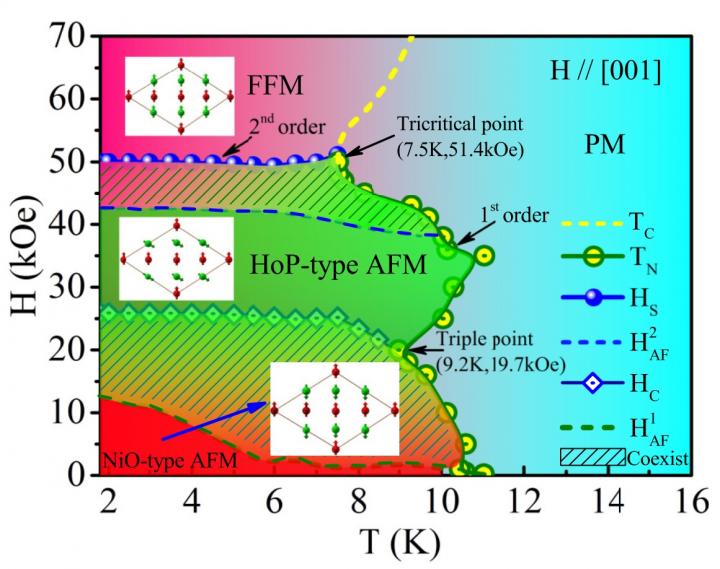
Credit: ZHANG Lei
Topological semimetals are one of the major discoveries in condensed-matter physics in recent years. The magnetic Weyl semimetal, in which the Weyl nodes can be generated and modulated by magnetization, provides an ideal platform for the investigation of the magnetic field-tunable link between Weyl physics and magnetism.
But due to the lack of appropriate or high quality specimens, most of the theoretically expected magnetic topological semimetals have not been experimentally confirmed. Therefore, exploration of new magnetic topological semimetals is of great importance.
Recently, researchers from High Magnetic Field Laboratory of Hefei Institutes of Physical Science (HFIPS), in collaboration with researchers from Huazhong University of Science and Technology, and Anhui University, resolved magnetic structures of different topological semimetals with the help of Resistive Magnet of China’s Steady High Magnetic Field Facility (SHMFF), HFIPS.
The united team performed an investigation on high-quality single crystals of PrAlGe and DySb. For PrAlGe, the intrinsic ferromagnetic ordering acts as a Zeeman coupling to split the spin-up and spin-down bands, but the whole band structure is still kept. The study of magnetism suggests that the magnetic interaction in PrAlGe is of a two-dimensional Ising type, revealing a uniaxial magnetic interaction along the c axis. However, the ordering moments are tilted from the c axis, which causes antiferromagnetism in the ab plane. As for DySb, a field-induced tricritical phenomenon is revealed. Based on the magnetization analysis, a detailed H-T phase diagram around the phase transition is constructed when the magnetic field is applied along [001] direction.
This phase diagram is indicative of delicate competition and balance between multiple magnetic interactions in these systems and lays a solid foundation for future research in topological transition and criticality.
###
Media Contact
ZHAO Weiwei
[email protected]
Original Source
http://english.
Related Journal Article
http://dx.




